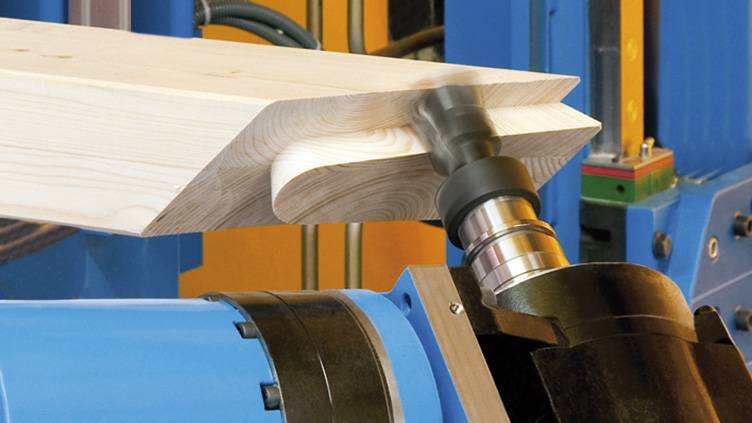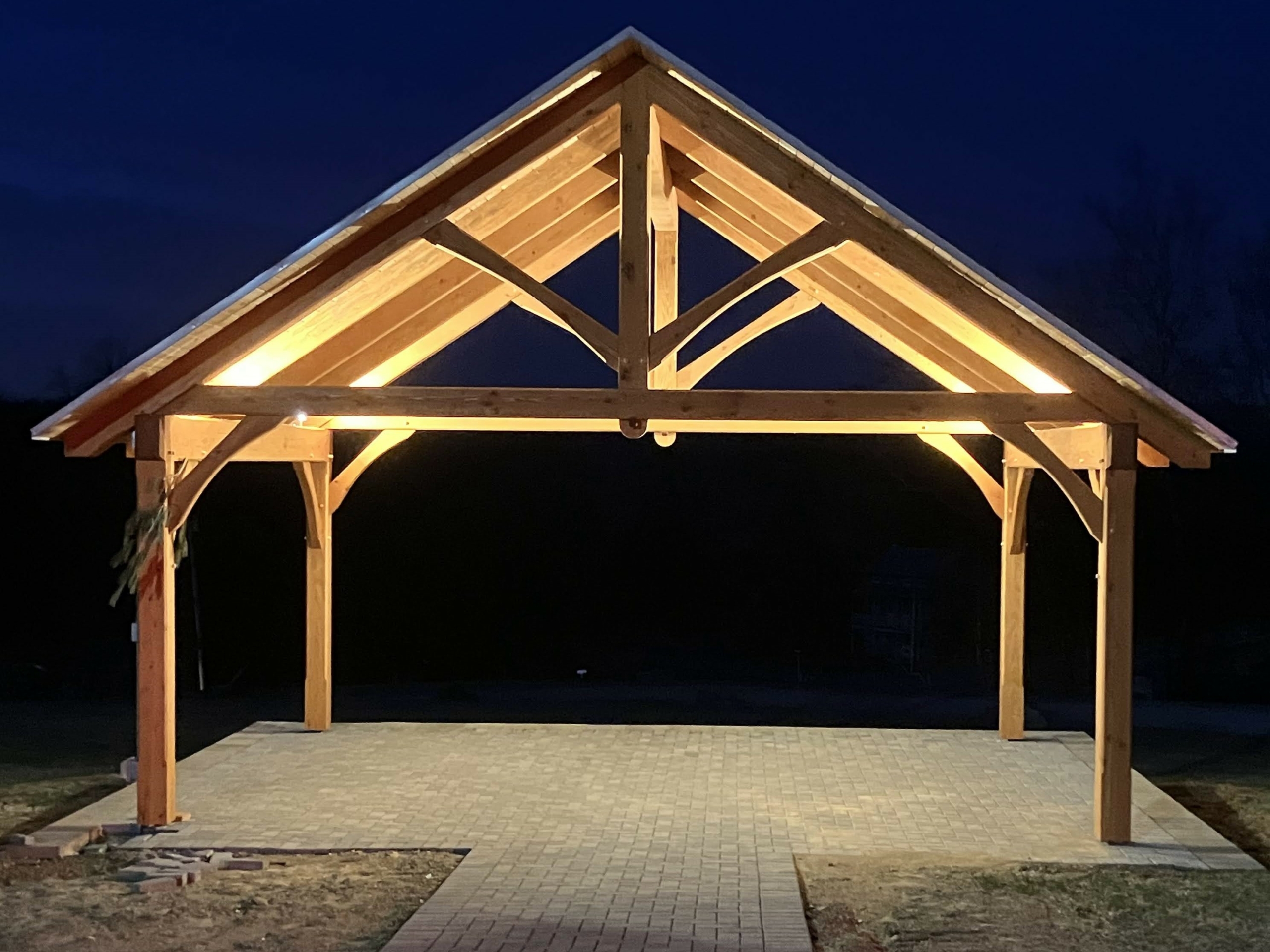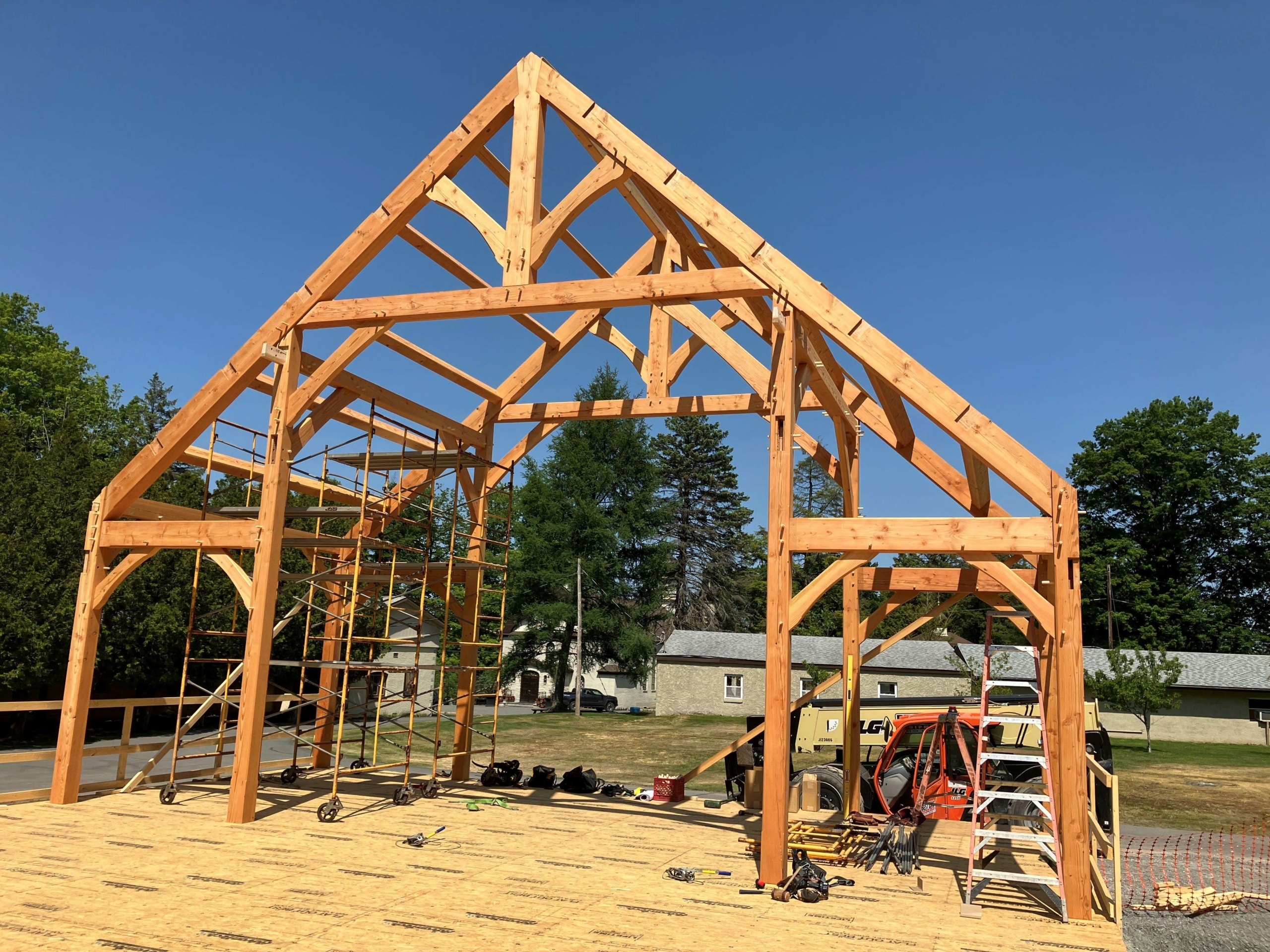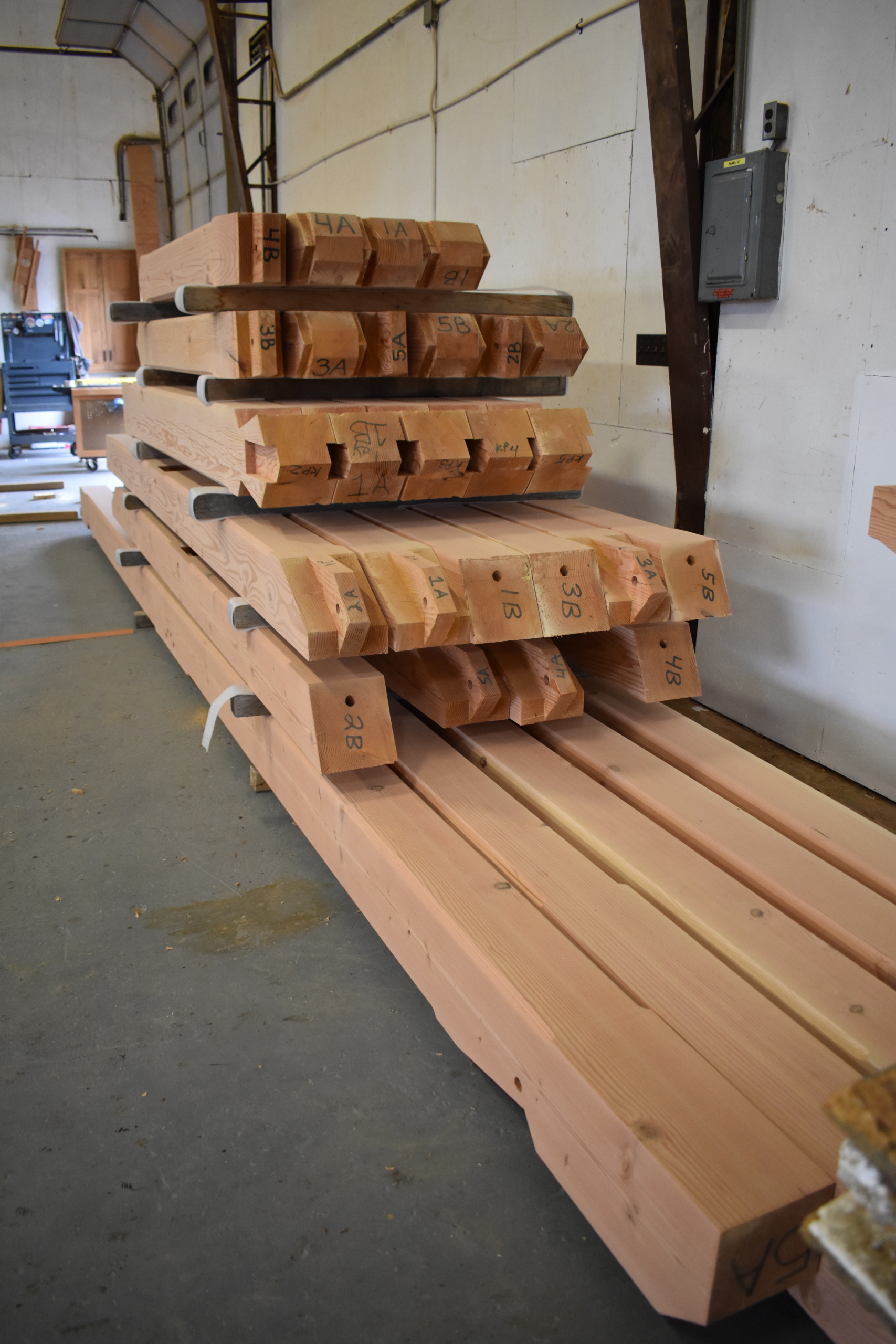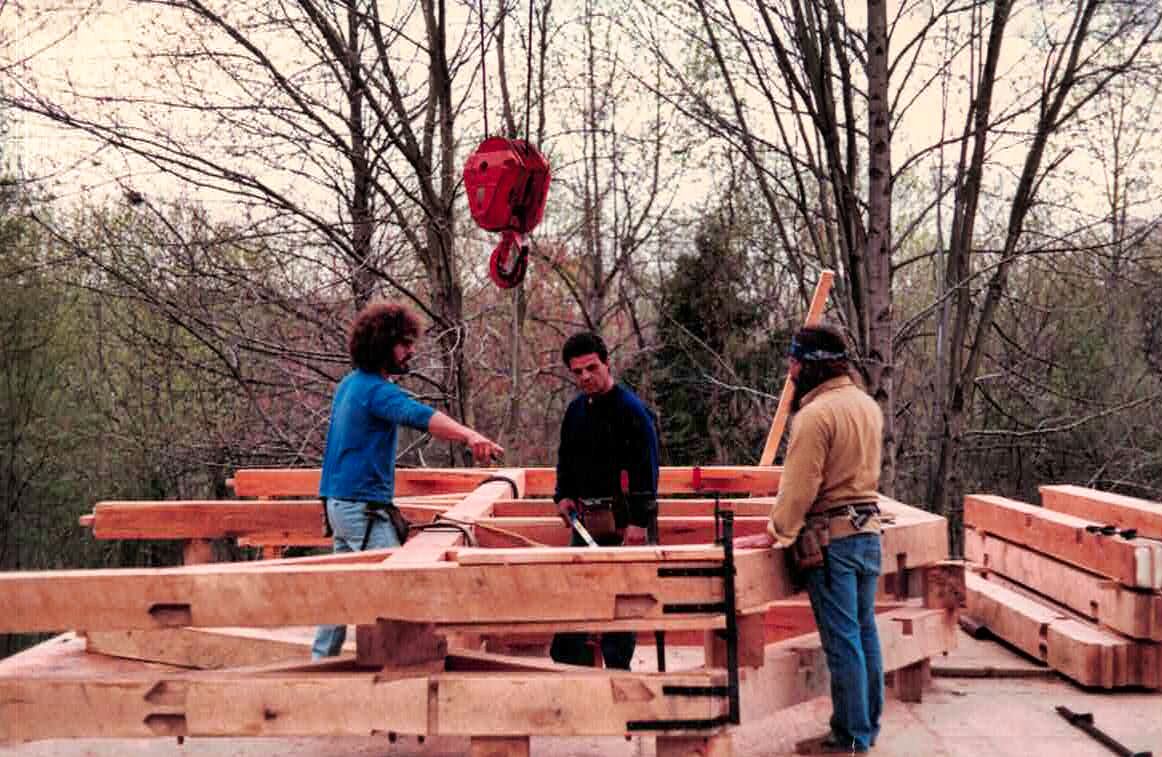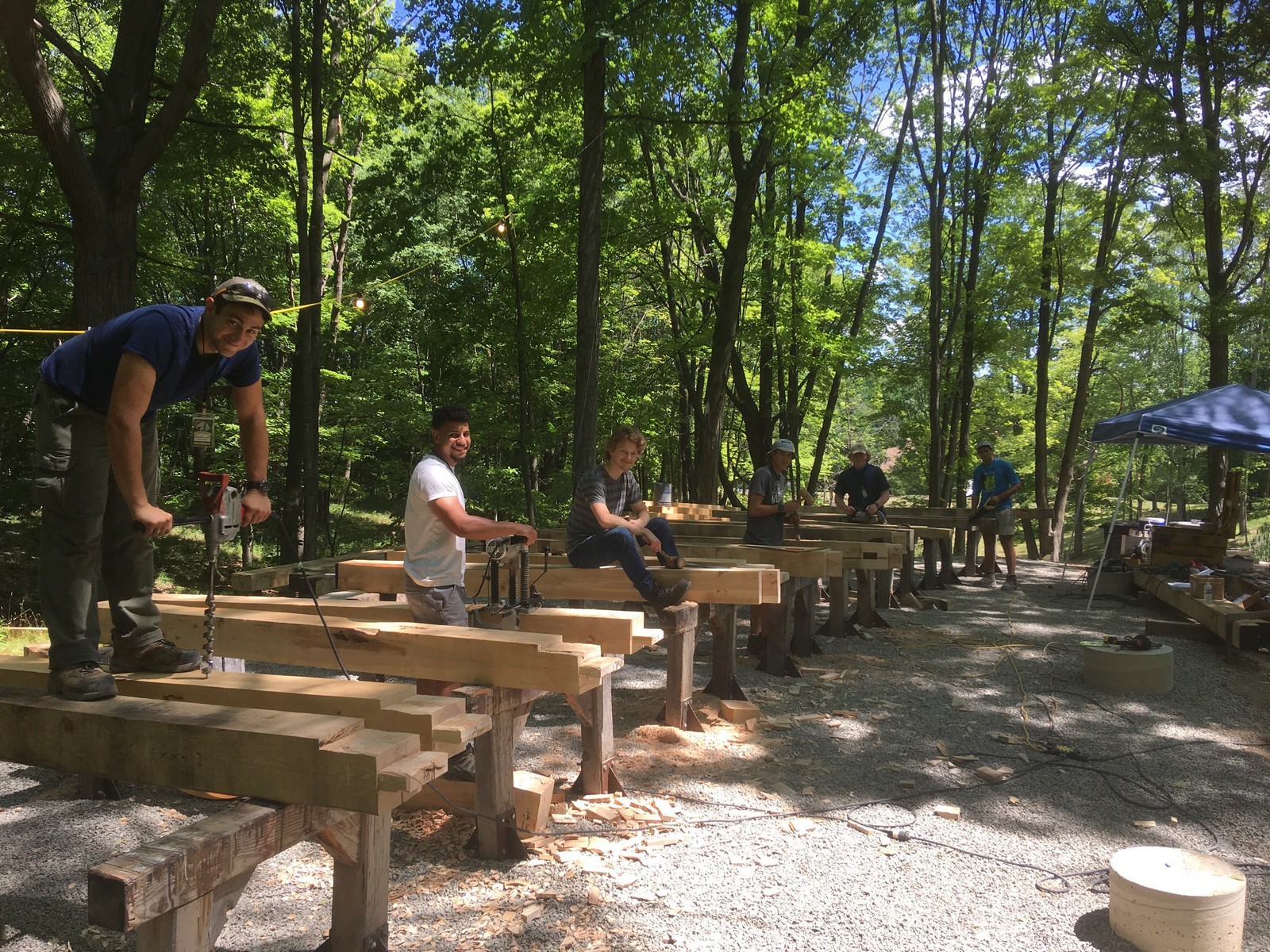Close to two decades ago, when a German company called Hundegger Maschinenbau GmbH first started selling its CNC machines to North American timber frame companies, an outcry from timber frame traditionalists erupted in the Timber Framers Guild magazines. The grass roots timber frame revival was barely two decades old. The traditionalists argued that “the machine” would destroy the newly revived craft, the “machinists” argued that true economy and precision could only be achieved with the introduction of “the machine”. After a period of particularly rancorous debate (I’m not sure “debate” is really the proper term) things died down and an unspoken, uneasy truce took hold. In the past couple of years some scattered border skirmishes have occurred, and it might be time once again to stake out a firm position. OK, in my humble opinion, it is time.
Full disclosure: my past life as an academic has inclined me to a good polemical scrap (some might say “tempest in a teapot”). Still, enough pro-CNC hype has been disseminated in the past couple of years that it’s getting harder and harder to stay out of what might soon be termed ‘renewed hostilities’. Some particularly egregious claims have been made by the proponents of mechanization; some claims are outright falsehoods, others are misleading, still others meretricious. I’d like to pick a couple of these apart.
You can’t get around the “unmatched precision” argument when you’re being regaled by a CNC timber frame company salesperson. The claim goes something like this: only a machine can achieve accuracy of 1/64th of an inch or better, and it’s this precision that makes the machine-cut timber frame unrivaled in appearance (tight joinery, etc.etc.). Not to put too fine a point on it, but it’s just plain silly to make such a claim.
First, it’s not true. A skilled craftsman can easily exceed that level of accuracy. The human finger tip can perceive 1/1000 of an inch in surface deviations (1/64″ equals about 16/1000″), and a craftsman can eliminate that deviation if the situation calls for it.
Second, it’s also untrue in a different way: as a former CNC machine operator, programmer, and designer (yet another past life), I can tell you that if the highest degree of precision a CNC machine could achieve was 1/64″, that machine would find itself in the repair shop or the scrap heap pretty fast. CNC machines are designed to achieve better than 1/1000th of an inch precision, and the areas where they’re best used actually require that degree of precision – plastics and metals used, ironically, in other machines. The question about precision, though, isn’t whether a machine is capable of it, but whether the final product will benefit from the kind of precision the machine is capable of.
Third, and most important, the claimed precision of 1/64″ isn’t really relevant. A CNC machine will assign a “zero” reference point somewhere on the work piece before the cutting operations start. With a hunk of steel, it’s usually a pretty safe bet that that reference point is really meaningful. With a big timber, assigning that reference point is less so. The timber may have twisted or bowed ever so slightly since being milled, its sides might be out of parallel or might describe a parallelogram due to shrinkage, and so on. If you assign a reference point at the end of a timber, the place where a mortise is being carved might be 10 feet or more away from that point. A big timber can deviate from that perfect, ideal reference point by a significant enough amount to make that theoretical difference absolutely irrelevant to the ultimate degree of precision with which the timber is cut. A skilled hand crafter will know his timber well enough to compensate for these variations to achieve a genuine perfect fit.
That mythical 1/64″ is also irrelevant in another way. While the machine should be – and better be – able to achieve that degree of precision on a piece of wood today (even ignoring the problem of zeroing the machine described above), that precision will vanish in a week or a month or a year. The wood is going to move. Hello? It’s wood! A timber measuring 8×10 on the shop floor today could quite possibly measure 7-3/4″ x 9-3/4″ in a couple months as the wood dries and strives to find equilibrium. It might shrink more than that. (Shrinkage even happens with kiln-dried timbers, but more about that in a future article.) The only way to achieve and keep precise-fitting joinery is to design and carve it with a true understanding of how the wood is going to behave over the years it holds your house up. Why invest in 1/64th of an inch precision if you’re not going to design and carve joinery that won’t show the effects of shrinkage in a few months?
Hand crafters don’t have a monopoly on this kind of knowledge, the kind of knowledge that’s bred from years of experience and mentorship in working with wood. But they have a leg up on the machinists. Why this is so has to do with another misleading claim that machine companies often make: CNC-cut timber frames are more economical than hand-carved ones.
That’s a dubious claim, but I can only address one aspect of it here. To the degree that a machine company actually does achieve cost savings, they do so in large measure by sacrificing some of the features of a well-crafted timber frame. A machine company has to feed the beast. Throughput is the watchword of the day, every day of the week, every day of the year. There’s a big lease payment due at the end of the month. CNC timber framing is about tonnage.
At the end of the day, a machine company simply can’t afford to take the time to design and carve joinery that will still look good in a few years; to get to know the timbers before a cutting tool or even a pencil touches them; to carve the timbers in the real world of the character of the material rather than the virtual cosmos of coordinates in some theoretical space.
There’s probably enough room in the world for the traditionalist timber framers, the mechanized timber framers, and the ones falling somewhere in the middle, maybe even the “virtual” timber framers (timber frame companies that sub out all or some of a timber frame project to other companies). But there shouldn’t be room for the misleading marketing claims of a few over-zealous machine companies. For some people it might make no difference whatsoever how their timber frame was cut. There are those, however, for whom the passion of the traditional craft of timber framing is an integral part of the monetary investment in a timber framed home. These are the “connoisseurs” – for folks like these the question isn’t a matter of indifference. They demand that their own enthusiasm be met with the passion of the people – real people – designing, carving, and erecting their timber frame, people whose own investment in the frame is worthy of the months and years of dreaming that often precedes a timber frame project.
– Tim Diener
